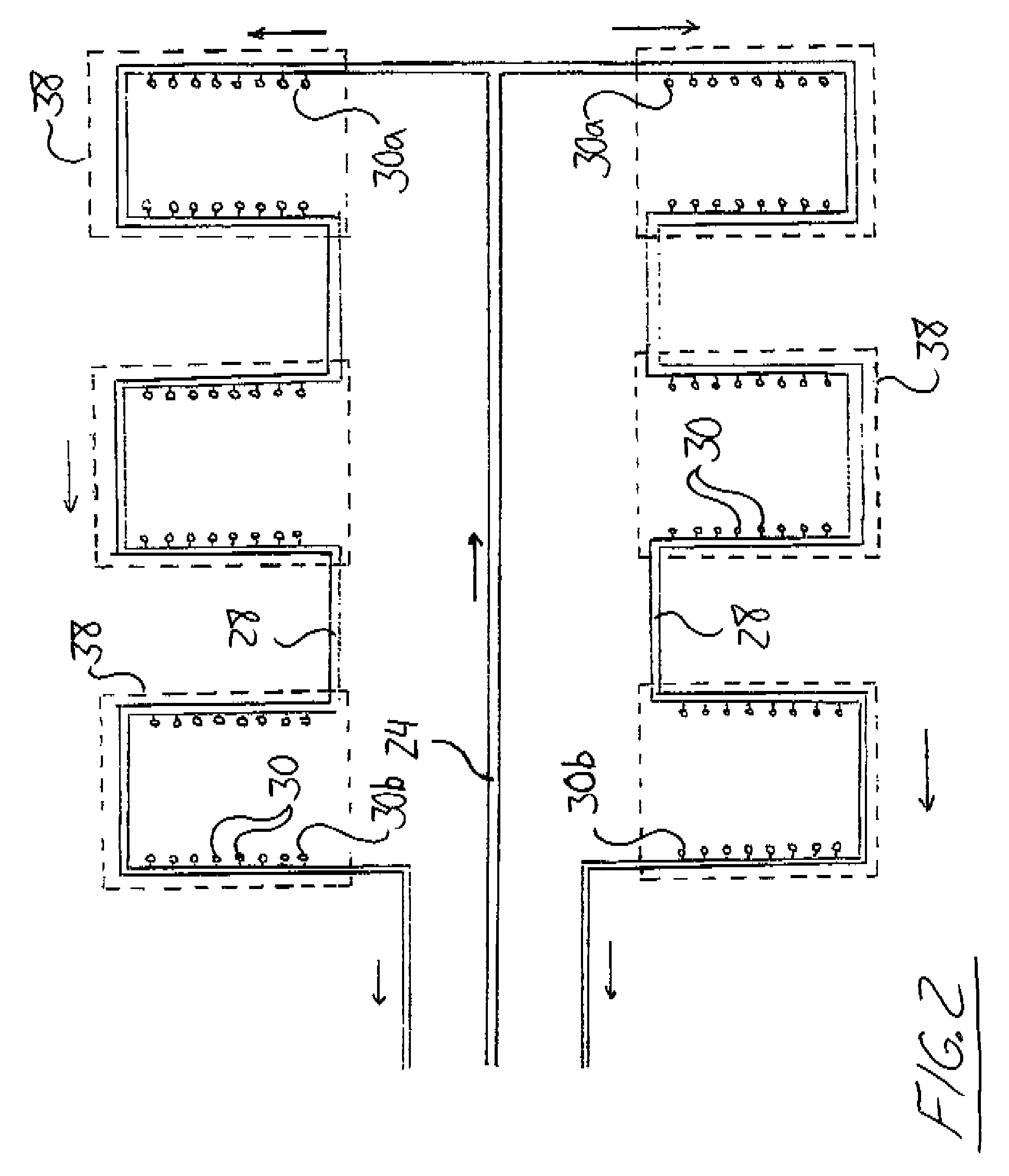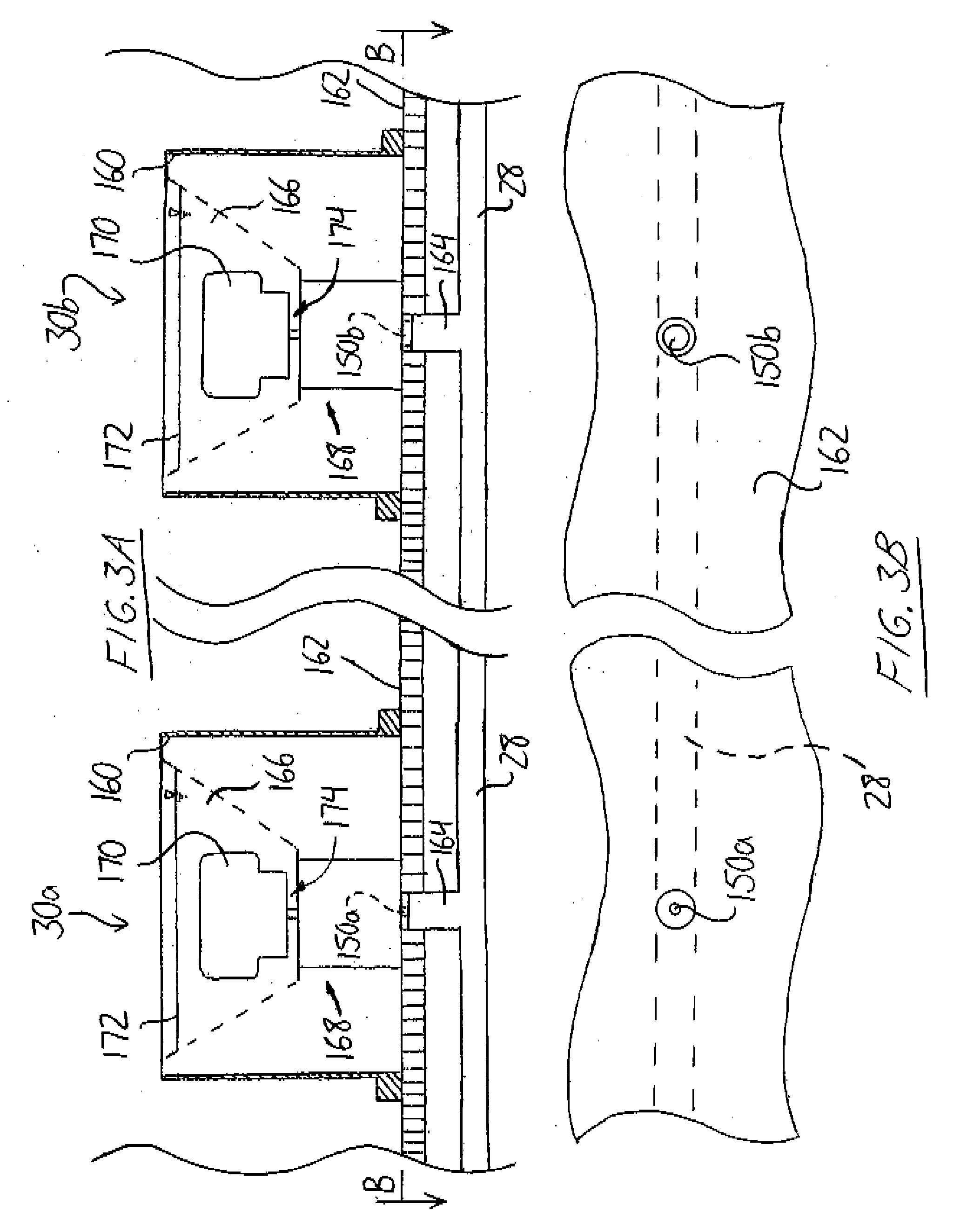Methods and Systems for Supplying Liquid Feed to Livestock
a technology for livestock and liquid feed, applied in the field of methods and systems for supplying liquid feed to livestock, can solve the problems of reducing the probability of survival of undersized or weak piglets, reducing the fraction of survivor's within an oversized litter, and facilitating the removal of liquid feed. , saving spa
- Summary
- Abstract
- Description
- Claims
- Application Information
AI Technical Summary
Benefits of technology
Problems solved by technology
Method used
Image
Examples
Embodiment Construction
[0076]FIGS. 1 and 2 show a feed system 10 for supplying supplemental liquid feed to piglets. As shown in FIG. 1, the system features a refrigerated mixing reservoir 12 having a connection line 14 in fluid communication with a drain of the mixing reservoir 12 at one end and with a larger second reservoir 18 at the other end. The larger second reservoir 18 is defined by a refrigeration container 20 having heating elements 22 installed within its interior. The refrigeration system and heating elements of the second reservoir 18 are selectively operable, one at a time, to either heat or cool a liquid contained within it. In addition to the connection line 14 linking the two reservoirs, a supply line 24 is arranged to communicate with the interior of the larger reservoir 18 and is equipped with a pump 26 to convey fluid from within the larger reservoir 18 further along the supply line 24. As shown in FIG. 2, the supply line branches into a pair of feed lines 28, each of which has a plura...
PUM
 Login to View More
Login to View More Abstract
Description
Claims
Application Information
 Login to View More
Login to View More - R&D
- Intellectual Property
- Life Sciences
- Materials
- Tech Scout
- Unparalleled Data Quality
- Higher Quality Content
- 60% Fewer Hallucinations
Browse by: Latest US Patents, China's latest patents, Technical Efficacy Thesaurus, Application Domain, Technology Topic, Popular Technical Reports.
© 2025 PatSnap. All rights reserved.Legal|Privacy policy|Modern Slavery Act Transparency Statement|Sitemap|About US| Contact US: help@patsnap.com



